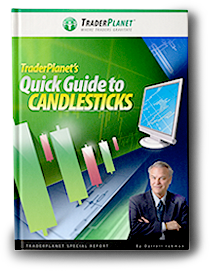There is a lot of mystique surrounding the topic of algorithmic and High Frequency Trading (HFT). In fact this is both used by traders as the “reason of the week” for them losing money and unscrupulous vendors claiming to be able to give traders an “edge over algos” or “see what algos are doing”. In this article, we will take an objective look at this form of trading and how it may or may not impact your own trading. In short – are you at risk from HFT/Algorithmic trading?
Your Trading
First of all, let’s consider how most retail traders trade. Generally speaking, retail traders are trading ‘outright positions’. This means they get into a position on a single instrument and either buy with a view to selling at a higher price later OR they sell (short) hoping to buy at a lower price later. It is a directional position, taking an opinion on which way the market may go. The duration of the trade will vary by trader from seconds to years. The instrument may also vary, from trading the instrument itself or a derivative of that market (e.g. options, futures).
Algorithmic Trading
Algorithmic trading covers many different styles of trading. A few years ago, I saw a statistic that 70% of all trading was algorithmic. This conjures up images of “Skynet” style “robot wars” and poor Joe public being left in the dust because he’s too slow. At the time this 70% number was being touted, there was something very interesting going on with Citibank, or rather – the Citibank shares. The shares were trading at a little over $3. On an average day, 300 Million – 1 billion shares would trade and the price would move between 4-6 cents. Now why on earth would so many people trade a stock that only moved 4-6c a day? Well, because they got a rebate for providing liquidity (limit orders) on that market. The stock was at a very low price, so that meant not much margin was needed per share. In effect, HFTs were targeting the stock, trying to get in on a limit order (and getting paid to do so), then “flipping” out of the trade with a 1c profit or at the same price.
There are a couple of things interesting about this. First of all, it’s not directional trading. We could have a billion shares trade but the people trading didn’t care which way the market went; in fact all of the liquidity they ‘provided’ stopped the market from going anywhere. They cared mostly about their queue position and the rebate. Secondly, that number of shares trading was a significant portion of total volume across all markets. So when we hear that 60% or 70% or 80% of the markets are algorithmic, that does not mean it is spread evenly across all markets.
This sort of trading is known as ‘rebate arbitrage’ and most if not all HFT trading is some sort of direction-neutral arbitrage.
Arbitrage
Arbitrage is the process of trying to make money from a price discrepancy. It’s been around for many years and has traditionally been the process of capitalizing on price differences between two or more markets. For instance, Index Arbitrage is trading an index derivative such as the S&P500 futures against a basket of stocks. When the futures and the stocks diverge too much (e.g. futures go up, stocks go down), then an arbitrage opportunity occurs (sell the futures, buy the stocks). The risk to the trader is that the instruments continue to diverge and they have 2 losing positions. They also have higher fees. It’s generally seen as a less risky way to trade. In just the futures markets, there are all sorts of arbitrage opportunities such as calendar spreads – trading 2 or more differently dated futures contracts for the same instrument. There’s the “Crack Spread” – trading oil against oil based products such as Gasoline. There’s the “Nob Spread” – trading 10 Year Treasury Notes over Bonds. There’s also arbitrage between Currency Futures and Cash Forex. We could go on and on but you get the idea, this represents a huge proportion of trading.
In short, it is arbitrage that keeps related markets in line. In fact, as competition increases for arbitrage opportunities, the potential reward for arbitrage trades gets smaller and smaller as people (or algos) are prepared to step in front of each other and trade a smaller and smaller discrepancy.
Then there’s the more nefarious “latency arbitrage” on NASDAQ (not an exchange but a network of exchanges), where an HFT firm will try to have the fastest link between 2 exchanges trading the same stock, they will then arb momentary discrepancies between the price on those 2 exchanges. There’s also something known as “quote stuffing” which is when a firm tries to slow down an exchange by flooding it with orders and then cancelling them. If you can slow down an exchange, price will lag and you can arb the difference. Charming.
On the subject of predators, there are predatory algorithms that try to sniff out larger orders in order to “step in front” of them or “front run” them, once again to arb a penny.
Market Making
Market makers provide a lot of the liquidity (limit orders) that we see in the markets; in fact they are contractually obliged to do so. They take a risk but if they do their job right, they are rewarded. It is a privileged position in the markets. They keep spreads narrow and they give us the “other side” to trade with when we want to get into and out of trades. Once again, most of this activity is algorithmic and that’s a really good thing as it means there is little lag in the availability of liquidity as price moves around. Again, this represents a decent percentage of trading that is algorithmic but not particularly predatory.
Other Algorithmic Trading
Many platforms give you the opportunity to place automatic exit orders once filled on a position, that’s an algorithm. Both platforms and exchanges allow you to “iceberg” a position, that’s an algorithm. Platforms allow you to split up large orders and send them to the market, once again an algorithm but in each case, the decision to make the trade was more of a human thing. So when looking at the huge amount of algorithmic trading as a percentage of all trading, don’t presume this is all “decision making robots” or “market predicting robots”.
How Does This Impact You?
The forms of trading we have discussed so far are either market neutral, where the players are playing for pennies or they are “little helpers” to help traders get into a discretionary position. The presumption a lot of retail traders make is that these “robots” are trading the same way that they are – making directional plays in the market, being better market predictors than a discretionary trader. Automated directional trading is the dream of many retail traders but there is little evidence it has actually been achieved. In fact, if you look at the costs involved with setting up the fastest route between 2 exchanges to scalp pennies in a latency arbitrage strategy, you have to wonder why HFT firms don’t just code up a moving-average strategy to buy low and sell high. Perhaps it’s because it is an exercise in futility.
In terms of impact, there are a couple of ways this sort of activity can impact regular traders. Many of these automated strategies are coded around being close to “zero risk”, their goal being to make a penny or get out of the trade at break even. There is a term known as “toxic order flow” which refers to a lot of orders coming into the market putting an HFT position at risk of taking a loss – not allowing them to get out at break even. So these strategies are on the look-out for signs of toxic order flow coming into the market against them, at which point they will get out of their trade. Of course, when a lot of HFTs spot this at the same time and attempt to unwind their positions, they become the toxic order flow they were trying to avoid and this can snowball into a mini flash-crash. You can get sudden moves in a market that makes very little sense and are caused by both liquidity (limit orders) being pulled and trades being exited.
Then there’s the way the retail trading industry has reacted, by selling systems and training courses to track or beat “the algos”. There’s always been a “them” in trading, “they” being the current excuse that you are losing money trading. The “algos” are the current best excuse for why it’s not your fault you are losing money and lots of retail traders are being suckered into parting with their money to learn how to “beat the algos”. Think about it, these strategies are trading for a tick, they are in and out in the bat of an eye. Even if you did know an algorithm was trading somewhere, what would you do? Try to take the penny off them? Is there any way you could do that before they were in and out? Of course not.
Perhaps the most dangerous impact algorithmic trading can have on the average retail trader is having them spend thousands of dollars trying to solve a problem they don’t actually have, trying to play “beat the algo” despite the fact there is no evidence they are the reason a trader is losing money.
Peter Davies is the founder of Jigsaw Trading. For more information, please click here.




